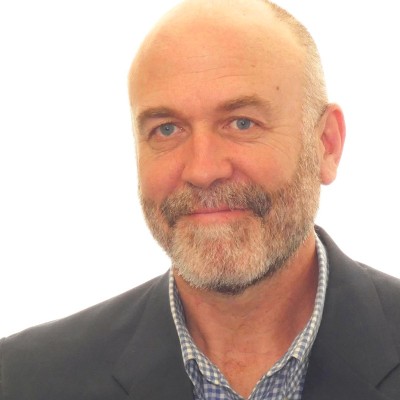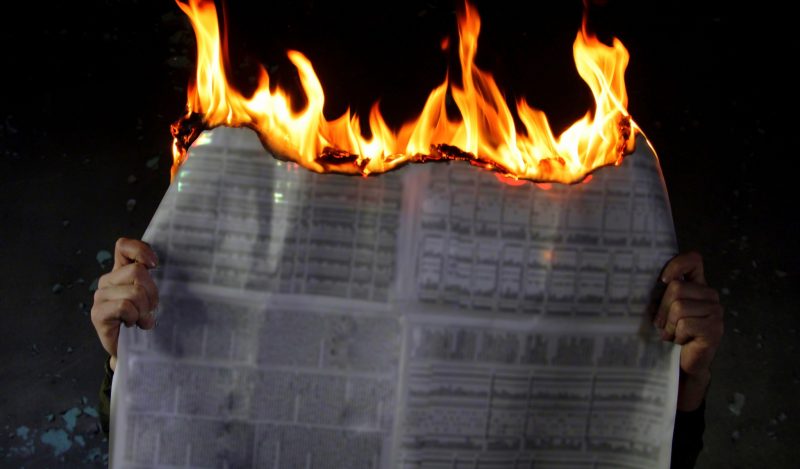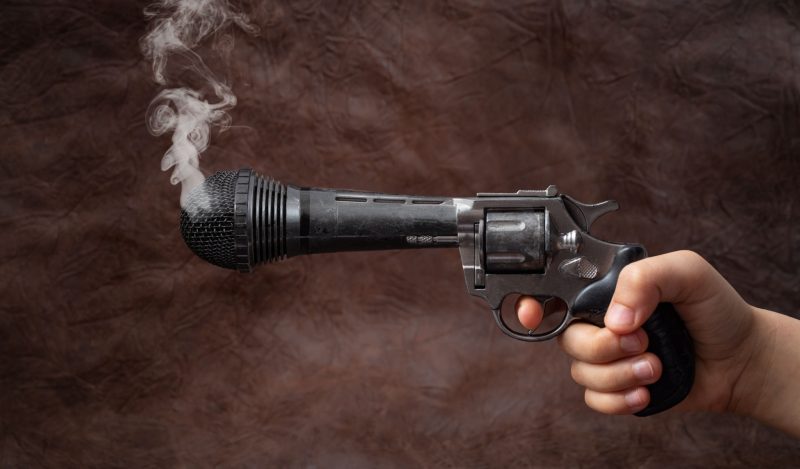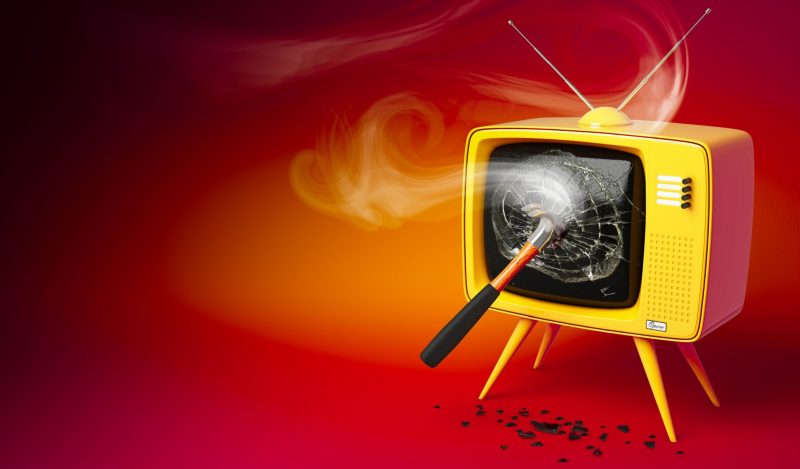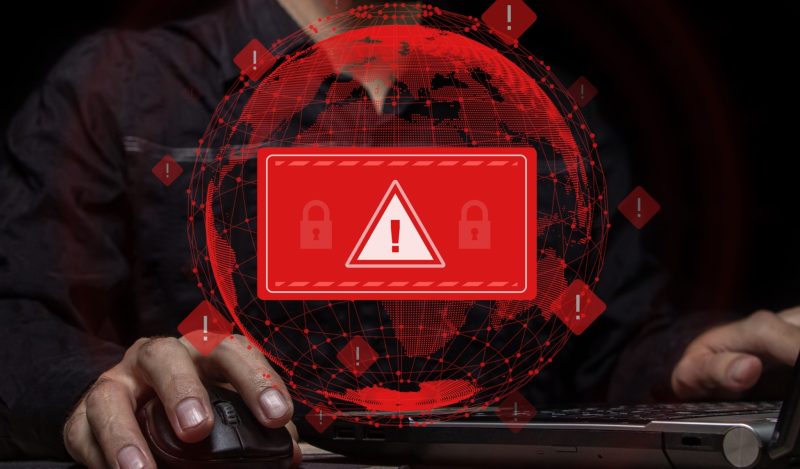We professors of journalism tell our students that a journalist must look for the hidden where no one is looking. Journalists must be dedicated to exposing the truth in all institutions.
We tell our students that a journalist must neither be attached to the government’s agenda nor speak as the voice of the government. Always check government claims against reality, and never downplay or discredit the effects of government policy or reports of civilians suffering under government actions.
We tell our students that a journalist is supposed to stay at a certain distance; stay impartial. Report the news, don’t influence it. A journalist must not be immersed in mixed loyalties.
A journalist should especially recognize that liberty is at risk in times of crisis. When crisis hits, newspapers have to work harder at challenging the government’s plans and actions.
The journalist is not to treat the enemy as a monster.
And all this so that self-governing readers can make their own decisions.
Perhaps I should have known that it would turn out this way. Canadian Prime Minister Justin Trudeau invoked the Emergency Act to deal with the Truckers Convoy, seized bank accounts, and removed their insurance. So far 190 protesters were arrested, including key trucker leaders. There were 100 checkpoints around downtown Ottawa at which you must present your reasons for entering “the red zone.”
The narrative was set before the truckers got there. In an election speech last summer, Trudeau warned that “there will be consequences” for the unvaccinated. As if speaking for all of us he has repeatedly stated, “Canadians are angry and frustrated with the unvaccinated.” Famously, on a December 29 television talk show Trudeau claimed that those who have not been vaccinated are very often “misogynists and racists” who “don’t believe in science/progress,” adding that “they take up space.” Trudeau concluded: “This leads us, as a leader and as a country, to make a choice: Do we tolerate these people?” Last week he called us “a fringe minority with unacceptable views.”
The narrative was set. It was a pure case of priming. Now this is where we find ourselves.
I teach a communications course on protest and media, so after the first few days of media coverage of the protest, complete with aghast and moral outrage at the reports of Confederate flags and swastikas at the protest, I had to do some research. I drove down into the heart of the beast and talked with police officers, who, as it turned out, were far more amiable than I had expected. I had one question: “How many swastikas have you seen?”
Group 1: “One, and I have been here since Saturday.”
Group 2: “A few”/ “What’s a few,” I ask. “Three? Ten?” /“A few” he answers.
“At events there are always a few,“ says his partner. /”Oh you’ve worked events here before? There’s always that kind of stuff?” / “Yes, always.”
Group 3: “One.”
Group 4: “There was one, but that was with a different group. The truckers were pretty quick to get rid of that one. They threw stones at them.”
“Yes, they’ve taken care of that kind of stuff…all without our involvement.”
Group 5: “Not one,” says the cop, making a zero sign with his gloved hand. “And I’ve been here since Friday.”
“The CBC inflames it all,” one answers, and they all nod.
“It’s been very peaceful. It’s been great that way. On that side of things, these guys are very disciplined.”
I had expected exaggeration, having been to protests before and seen how the CBC massages the numbers. This was shocking, though.
So, in our Zoom class, I shared my brief findings with my students. Why the discrepancy between these guys and the legacy media? Generally, there’s a collective shrug. As we dip into the well, though, and a few of my students who have ventured into the protests and talked with the truckers share their observations, two of my students comment in the chat: “Isn’t it interesting that those questioning the presence of the swastika and Confederate flag are white.”
I ended the conversation there.
I bring out the theory.
In Canada, over 80% of the media is owned by five companies: Bell Media, Rogers, Postmedia, Corus, Torstar. They exist, of course, to cover a range of topics for the social good, but also to sell advertising and make profits. It’s a small and highly competitive market. What gets covered, especially at protests, is controversy, confrontation and spectacle.
We move onto Jules Boycoff who, in 2006, showed how media such as the New York Times, Washington Post, NBC and CNN portrayed two WTO-related protests, according to the percentage of certain frames used in their coverage:
Violence frame (59%)
Disruption frame (47%)
Freak frame (39%)
Amalgam of grievances frame (26%)
Ignorance frame (19%)
“Several decades of research,” says Boycoff, “has emphasized that media coverage of activism tends to marginalize the concerns of activism by focusing on the most extreme elements of protest, whether the focus is on violence or those they portray as naive buffoons.”
Onto Todd Gitlin, who in The Whole World is Watching, showed how the media undermined the Students for a Democratic Society (anti-Vietnam War movement) by downplaying or outright dismissing its core motives and concerns. The media regularly focused on the extreme elements and portrayed activists as naive and laughable.
I raise the specter of surveillance, particularly Amazon Ring and its relationship to US police in their surveillance of BLM protests. Then we discuss the female protester in Ontario whom police paid a visit to the other day at her home. The officer revealed that police are monitoring Facebook groups. This cop was performing a service, and was there to offer a brochure on peaceful protest.
Do we want this kind of surveillance?
I throw out a few thought-provoking questions: Have you seen any mainstream media portray any of these thousands of people in a positive light? Does the media interview the people on the ground or rely on official reports? Have the journalists asked the deeper questions and provided analysis about the cause and motives behind the protest? Why do you think the National Post, when faced with the largest protest in Canadian history, chose to showcase for two days on its front page a protester in a thong and fur coat?
These are fourth-year communications students. They have been taught to question their feelings when viewing media, to recognize that everything is framed with a purpose: what you feel after viewing a news report is what you’re meant to feel. They know about the race to set the narrative, and that our own need to be comfortable in our worldview typically supersedes reason and objectivity.
We talked about the fact that in times of crisis, the message gets narrowed–“greased messages”–rather than more nuanced, more complex, and thus we have to keep pushing wider the shrinking information box; we are dealing with human people, not cliches, after all. We talk about attribution and how vital it is to separate our emotions and prejudices from the observable facts of an event. We talk of in-grouping, out-grouping and scapegoating, and the imperative to always seek the primary documents and evidence. We talk of trying to take a “deliberate misreading” of events and being creative about our interpretations: engaging what I like to call “the sacred space of negotiated meaning” between us and “the other.” Finally, I even pull a Martin Buber and go all mystical on how to embrace an “I and Thou” approach to the world.
I’m out of breath. It doesn’t seem to be sinking in. To be fair, there are some who have surprised me in these conversations—five or six students who aren’t on board with the truckers but who are still wrestling with this reality, with tension and ambiguity, with the research, and with the comments of their peers. But the general assessment is perplexedly unnuanced, veering little from the CBC and Justin Trudeau’s talking points. They are determined to demonize the enemy.
Why the discrepancy between what these students have learned for four years and what they are applying now in real life? A Confederate flag and a swastika seen at the protest. Incessant and irritating honking by the protesters through the day. Blocked downtown streets. Some university students and local residents who have been “accosted,” and, in particular, asked why they continue to wear masks outside. Someone’s lawn got peed on. A renegade leader is linked to the Maverick Party and had apparently made supremacist comments in the past. And beyond that a whole lot of massaging and conflating of bits and inferences.
These comments and all the attribution that goes with them have won the airwaves, and cast aside the thousands of Canadians out waving their flags, the collective discipline shown by the at least ten thousand truckers involved, the repeated and clear public statements by the leadership asking everyone to stay peaceful and find forgiveness, and simply asking the Prime Minister to talk.
For my students the guilt is clear: What the Prime Minister said back in December is unequivocally true.
What has happened to this student generation? Is the pillar of the fourth estate still that influential even in the age of the Internet and alternative media? Has the pandemic so numbed these hippies’ grandkids that they will not question the hegemony and The Man in the designer socks? Are these students just afraid to go out on the limb of independent thought?
After class, some of my students pull me aside, at least as it happens on Zoom. They want to talk. Kayleigh’s mom has lost her job in the government. She herself has lost a co-op. Shannon is gay and living with her partner, and in the past we’ve wrangled over the use of the word “partner,” which I personally reject (She’d laughed and called me privileged; then we agreed on the word “companion”).
In these classes I have watched the incredibly concise and respectful conversation she has been trying to have in the chat window. Brian had said in class, “I am what you guys would call an anti-vaxxer. Just so you know, I am from Africa, and I am probably vaxxed more than any of you.” To me personally he adds, “I am long past thinking of what people think of me.”
They thanked me for the class conversation. And then these students, some through tears, unload about how difficult their classes have been. Over these past two years and especially now they feel completely silenced.
There’s one more: a young woman who has stood out in this discussion as sharply articulate. I say, “Jenn, you’ve been in a couple of my classes; you’re thinking for yourself and you’re really articulate. What are you going to do with this after you graduate?”
“I want to fix journalism,” she says.
Whatever professorial facade I had has now cracked.
Lurking back in the corners of my Zoom class are a number of students from and in China. I don’t hear much from them these days. Some of them I had heard from last semester, though, and was especially intrigued by their journal responses to an image posted in class. The image was the Tank Man, that lone Chinese academic in Tiananmen Square, standing facing a column of tanks, holding his briefcase. One lone man.
I’d taped the image to my bedroom wall as a young teenager. It was a clear and inspiring message about the stand for freedom.
Over the last few years, the responses to this image have become more varied. Many of my students from China don’t typically talk of Tank Man in positive tones. Tiananmen, they say, was infiltrated by Western money and influencers who riled up naive students who could not have known any better. As with the recent Hong Kong protesters, they did violence to a society’s stability and harmony. The police and the soldiers in those tanks were just doing the best they could. The authorities are the heroes.
I’m left to wonder what my students will say about the image next year.
Today, though, as I watched the tow trucks pulling the big rigs out of the Ottawa streets, and hear more reports of dissidents being arrested, what stays with me is not really the numbness of the collective group-think I’ve seen in my lectures—it was always there, after all. No, it’s the handful of students who have stood out, who have bravely put themselves way out on the social and intellectual limb. These twenty/twenty-two year olds, after two years of constant pressure, of being daily harangued that they are selfish and ignorant and have unacceptable views, are still standing up to an increasingly militant collective. They are thinking for themselves.
“I want to fix journalism,” she says.
This gives me hope.
Published under a Creative Commons Attribution 4.0 International License
For reprints, please set the canonical link back to the original Brownstone Institute Article and Author.

